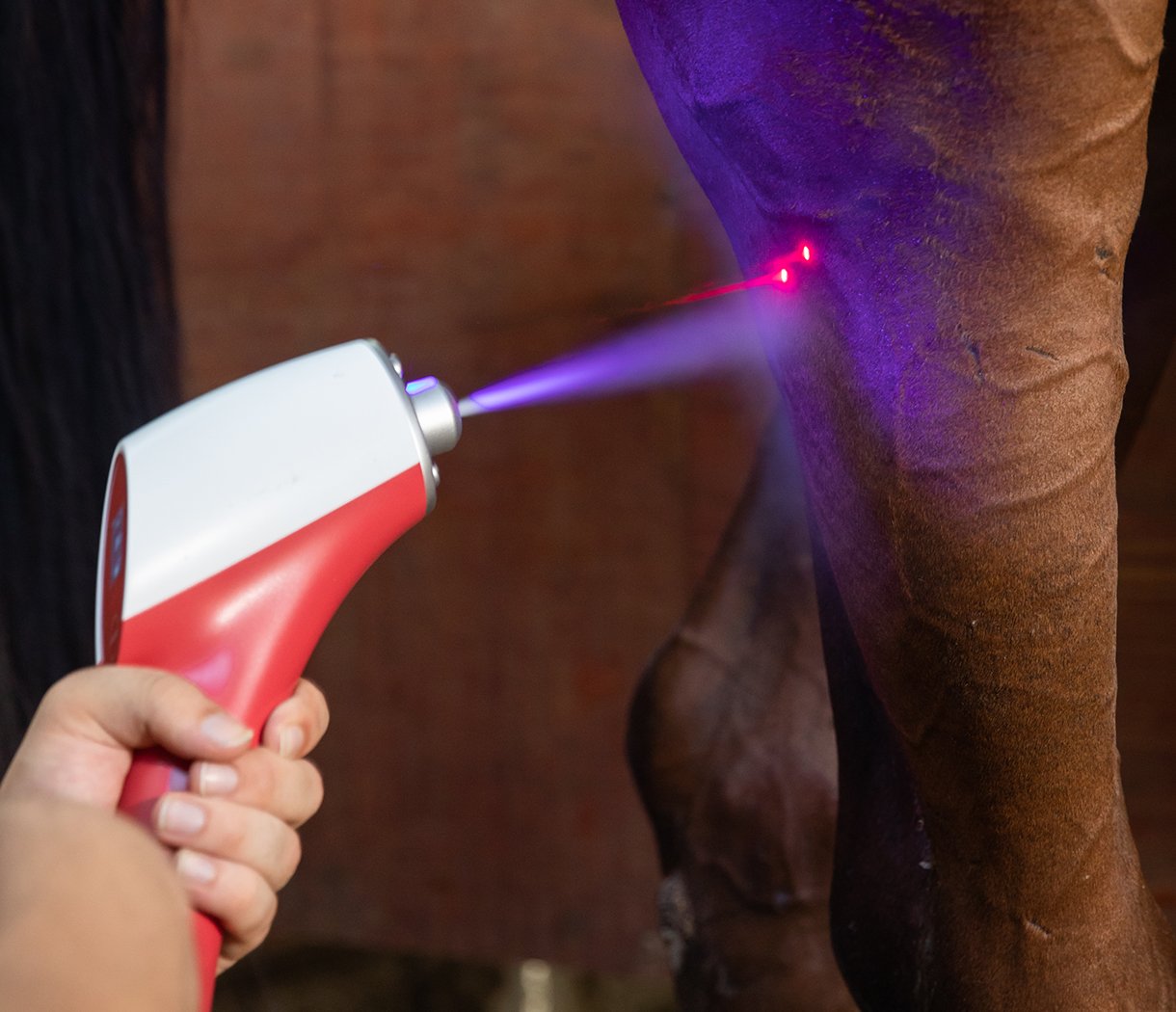Introduction: The Importance of Stifle Health in Horses
The stifle joint is crucial for a horse’s mobility, functioning like the human knee and driving forward movement. However, it’s prone to issues such as vascular swelling, which can result from overexertion, trauma, or inflammation. This swelling can lead to discomfort, reduced movement, and chronic lameness, impacting the horse’s performance. While traditional treatments like icing and medication offer temporary relief, they don’t address the root causes of inflammation. Enter CO2 cryotherapy—a revolutionary approach to treating vascular swelling in the equine stifle.
What is CO2 Cryotherapy?
An Overview of CO2 Cryotherapy
CO2 cryotherapy is a cutting-edge treatment that uses carbon dioxide in its solid form (dry ice) to target areas of inflammation and pain. The process involves applying CO2 to the affected area, where it rapidly cools the tissue, causing blood vessels to constrict. This constriction reduces blood flow to the area, thus minimizing inflammation and swelling.
The use of CO2 cryotherapy in horses, specifically for issues like stifle swelling, is gaining traction due to its non-invasive nature and impressive therapeutic effects. Unlike traditional methods such as ice packs or heat treatments, CO2 cryotherapy provides a more controlled and focused treatment, making it especially beneficial for horses.
Mechanism of Action
The effectiveness of CO2 cryotherapy lies in its mechanism of action. When applied to the stifle area, CO2 rapidly lowers the temperature of the surrounding tissues. This cooling effect causes vasoconstriction—the narrowing of blood vessels—which reduces the flow of blood and lymph to the swollen area. The reduction in blood flow helps decrease swelling and inflammation, while also numbing the area to provide pain relief.
Once the CO2 application is removed, the blood vessels dilate (expand), leading to a rush of fresh, oxygenated blood to the area. This “rebound effect” accelerates tissue repair and reduces the recovery time needed for the affected area to heal. The combination of inflammation reduction and enhanced tissue healing makes CO2 cryotherapy a powerful tool in managing vascular swelling in the equine stifle.
Benefits of CO2 Cryotherapy for Equine Stifle Health
CO2 cryotherapy offers numerous benefits for treating stifle vascular swelling, and its advantages extend beyond just reducing inflammation. Here’s why it is becoming an increasingly popular choice among equine veterinarians and horse owners:
Reduced Inflammation and Swelling
The primary benefit of CO2 cryotherapy is its ability to target and reduce inflammation directly. By cooling the affected tissues, CO2 cryotherapy helps to bring down swelling in the stifle joint quickly and efficiently, leading to faster recovery times.
Pain Relief
The cooling effect of CO2 therapy also serves to numb the area, providing immediate pain relief. This is crucial for horses who experience discomfort from vascular swelling, helping them feel more comfortable and allowing them to resume movement sooner.
Faster Recovery and Healing
As blood flow increases after the application of CO2, it helps accelerate the natural healing process of the damaged tissue. Horses can recover more quickly from stifle injuries and inflammation, minimizing downtime and reducing the need for long-term medications or invasive treatments.
Non-Invasive and Safe
Unlike surgery or injections, CO2 cryotherapy is non-invasive, making it a safer alternative for horses. There are minimal risks associated with the treatment, and when performed correctly, it poses no harm to the animal.
Why CO2 Cryotherapy Is Better Than Icing Your Horse?
While traditional icing methods can help reduce swelling, CO2 cryotherapy offers several advantages. First, it is more effective because of the controlled cooling and vasoconstriction effect. Ice packs tend to cool the area unevenly, and their effects are often short-lived once removed. CO2 cryotherapy, on the other hand, provides a more comprehensive cooling effect and enhances healing through its rebound mechanism.
Moreover, CO2 cryotherapy can target deeper tissues more efficiently than surface-level ice applications, making it ideal for conditions like vascular swelling in the stifle, where deeper inflammation may be present. The ease of use and precision of CO2 cryotherapy also make it a more practical solution for ongoing management of equine stifle health.
Conclusion: A Promising Solution for Stifle Swelling in Horses
CO2 cryotherapy is emerging as a game-changer in the treatment of equine stifle health, particularly for managing vascular swelling. Its ability to reduce inflammation, relieve pain, and accelerate healing makes it a superior option compared to traditional methods. Whether you are dealing with an acute injury or looking to manage chronic swelling, CO2 cryotherapy offers a non-invasive, effective, and safe solution for your horse.
By incorporating CO2 cryotherapy into your horse’s treatment plan, you can enhance their performance, promote quicker recovery, and ensure long-term joint health.



